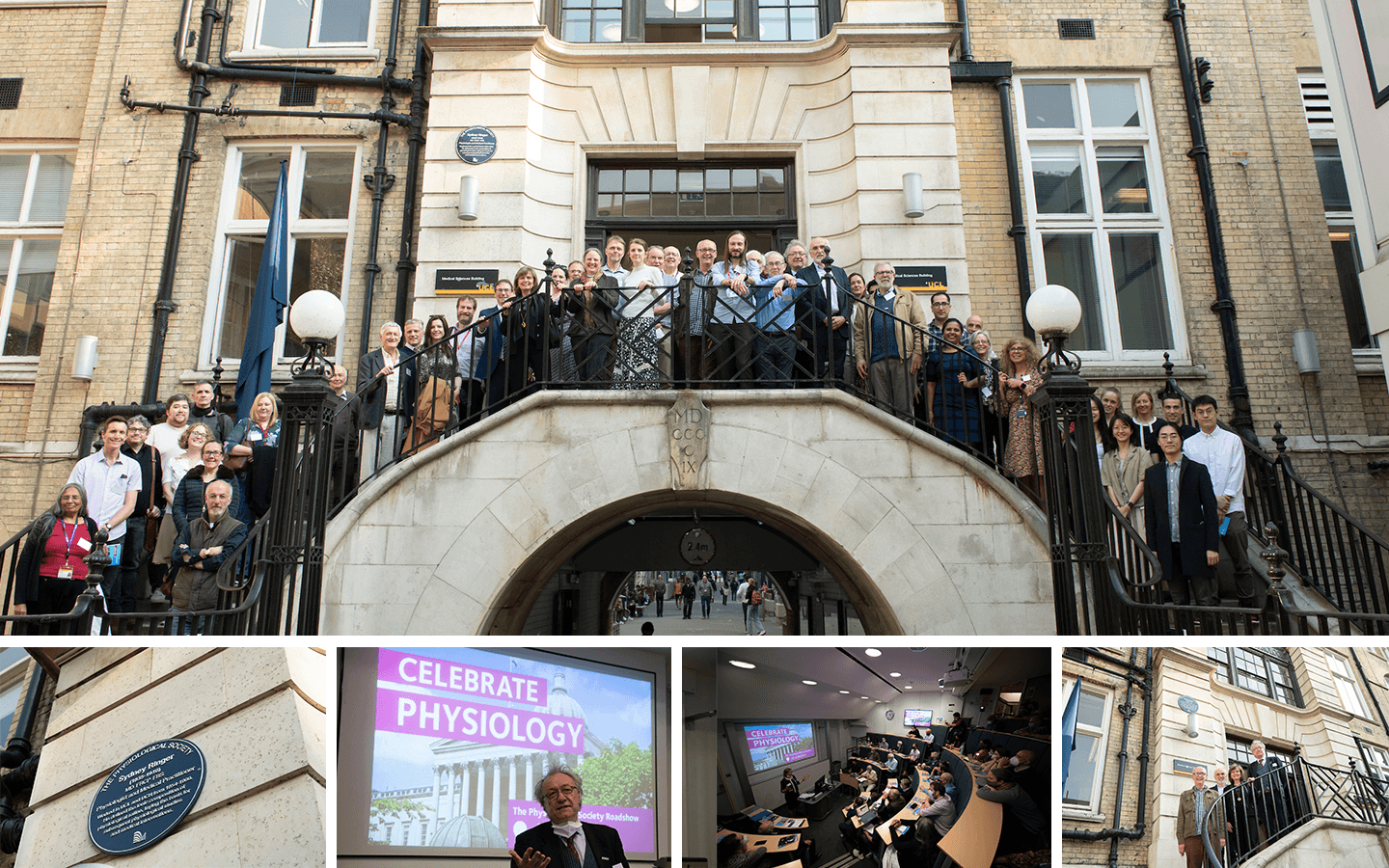The Physiological Society was delighted to unveil a blue plaque in London celebrating the work of outstanding physiologist Professor Sydney Ringer (1835 – 1910) whose fundamental insights are built into the foundations of physiology.
On Thursday 24 March, Professor Andrew Pomiankowski, Director of Division of Biosciences at University College London unveiled the plaque following an afternoon of talks about Professor Sydney Ringer’s work and discoveries. The plaque has been positioned on the Medical Sciences and Anatomy building on Gower Street at University College London, UK.
The Physiological Society’s blue plaques honour outstanding physiologists who have contributed to the advancement of the discipline through their discoveries while leaving a legacy beyond their lifetime.
Professor Sydney Ringer was a British clinician, whose research still underlies modern physiology and pharmacology. Ringer worked at University College London and its hospital from 1860 to 1900. During this time, he was also Assistant Physician at Great Ormond Street Hospital for Children in London. In 1883, Ringer invented the composition for a saline solution (a mixture of salt and water) that could maintain the beat of the frog’s heart. This saline recipe is referred to as ‘Ringer’s solution’ and it is now commonly used in the intravenous fluid drips in hospital wards and surgical theatres providing life-saving fluid replacement for patients. Ringer was one of the earliest members of The Physiological Society, joining in 1884.
Dr David Miller, Honorary Research Fellow at the University of Glasgow, said:
“I’m delighted to contribute to this event that commemorates someone of the scientific and clinical eminence of Sydney Ringer. The humble hospital ‘drip’, or ‘physiological saline’, as well as so many experimental and clinical methods using such fluids ultimately derive from Ringer’s pioneering work of the 1880s. His name and the fundamental insights his research provided deserve to be better known.”
Professor David Attwell, incoming President of The Physiological Society, commented:
“Sydney Ringer came to do medicine at University College London in 1854 because, importantly for Ringer, UCL admitted non-Anglican protestants (unlike Oxford and Cambridge). He discovered, in what is now the Slade School of Art at UCL, that London’s hard tap water contained calcium salts that was essential for sustaining the beating of the heart. This eventually led to an understanding of the role of calcium as a signalling messenger and to solutions used widely in medicine to maintain the function of living organs.”
This is the eighth unveiling in The Physiological Society’s Blue Plaque scheme which is intended to raise the visibility of physiology and give the wider public an insight into the positive role that ‘the science of life’ plays in their everyday lives. It is hoped that these plaques will spark curiosity and help inspire new generations to get involved in the physiological sciences.
During the year, The Physiological Society will be unveiling blue plaques at institutions across the UK and Ireland, celebrating and recognising institutions where distinguished physiologists who have made significant contributions to the discipline.
The plaques provide long-term recognition of the impact these scientists and their science has had, and by extension these plaques provide a marker of excellence for the universities that they adorn.

